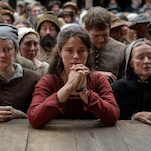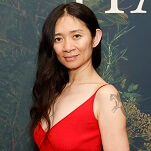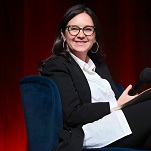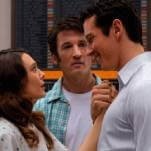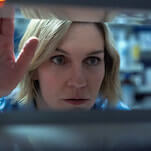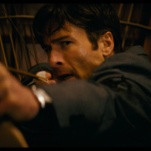Day One at Sundance sends Michael Cera on a wild, drug-filled odyssey through Chile
It might seem logical for a film festival to open with one of its best entries, but in practice, opening night movies are usually middle-of-the-road fare—comfortable, unchallenging movies unlikely confuse the donors and corporate sponsors in the crowd. (Toronto, which normally starts with a forgettable Canadian film, broke significantly with tradition by opening with Looper.) Say this, at least, for Cherien Dabis’ May In The Summer (B): It perfectly encapsulated both Sundance’s virtues and its faults.
Introducing the film in Park City’s capacious Eccles Theatre, Dabis gave Sundance credit for her career, and with good reason: Her first feature, Amreeka, premiered here, as did her first short film, and May was developed through the Sundance Labs, which Robert Redford called Sundance’s primary raison d’être. May shows more confidence than Amreeka, not least in the fact that Dabis steps in front of the camera for the first time, playing a New York-based writer who goes home to Jordan to prepare for her marriage to a fellow Arab intellectual. Sisters Alia Shawkat and Nadine Malouf are waiting for her, occasioning an awkward reunion with mother Hiam Abbas, whose newly devout Christianity puts them all ill at ease. Dabis has light touch with cultural reference points, swiftly limning the sisters’ mixed feelings at returning to a home they no longer know. Malouf, seeing a carload of niqab-clad women, drops a sly dig at the country’s proliferation of “ninjas,” and later, she and Shawkat feud over whose Arabic is better. (Dabis, the imperious older sister, settles the matter: They both speak terribly.)
Although the actresses don’t resemble each other even slightly, their sisterly rapport is perfectly captured, a mixture of half-formed jokes and long-simmering resentment. But Dabis’ touch grows clumsier when she needs to push the plot forward, and her shot choices range from odd to almost incompetent. She shoots stationary conversations from directly opposite angles, so that characters leap from one side of the screen to another, and when she tries to track all three sisters in a single shot, the result is visual chaos. The Sundance Labs have birthed dozens of great films, but it doesn’t speak well for the program when a graduate comes to her second feature lacking a full set of basic tools.




